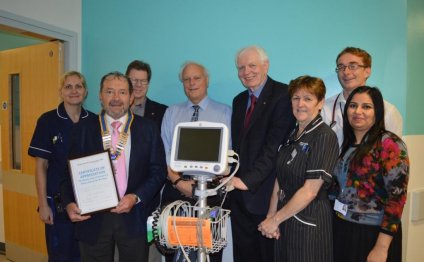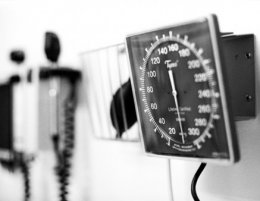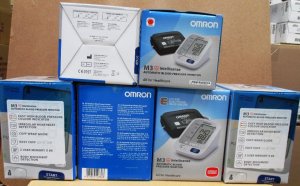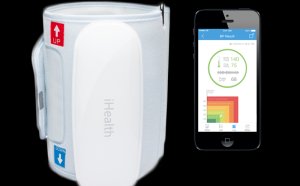
NHS Blood pressure Monitor
 Project could see up to 25, 000 patients monitored remotely
Project could see up to 25, 000 patients monitored remotely
Around 2, 500 patients are to take part in a pilot study which will see their blood pressure readings remotely monitored by health professionals.
The feasibility study, being carried out in the NHS Lothian region, will see patients who suffer from high blood pressure take their own readings and text the results to their doctor by mobile phone.
GPs will then be able to see a much greater quantity of data than they normally would, which in turn aims to give them a better understanding of the patients, and improve care outcomes.
It is also hoped the data – which will trigger an automatic response to advise patients to contact their doctor if they are deemed at risk – will ultimately reduce the number of face to face appointments.
Professor Brian McKinstry, a GP and also professor of Primary Care and E-Health at Edinburgh University’s Centre for Population Health Studies, said: “Patients will take their blood pressure and they will text their results to a central server and every month or every three months, depending on how well the patients control, a report of that blood pressure will be sent to their GP. So it’s following a light touch regime: it’s not that someone’s going to be sitting there waiting for something to happen.
“What’ll happen is that GPs will get a report and it’s lot more information than they have been getting up until now, where they just see a patient twice a year, so we anticipate that this will improve care and also hopefully, although we don’t know if it will or not, it will be able to reduce the number of times a patient will be able to go to the doctor, which is a benefit for both them and the medical practice.”
If successful, the project could be rolled out to some 25, 000 patients across Scotland over the next two years. The study also hopes to incorporate pregnant women, who are deemed a group particularly at risk of high blood pressure.
Whilst not a ‘high-tech’ form of communication, in using simple SMS messaging, the system could be modified in future to reflect the rapidly growing number of people using smartphones. However its beauty is its simplicity, and low cost, according to Professor McKinstry.
“The system we’re using is a really, really simple system: it’s even called ‘simple telehealth’”, he explains.
“In the future, of course, it would be sensible to use an app but at the moment we will not be going along that route, but we will probably be doing it. We’re aware of the fact that texting is a format that is slowly disappearing but the system is set up in such a way that it will work even with the changes in technology.”
The technology itself, called Florence, was developed by NHS England but has been adapted for use by GPs in Scotland, to present the data in a way which can be easily assimilated. The initial patients will be recruited at the beginning of next year and once the pilot has been evaluated it could be rolled out across the country within the next 24 months.
Alongside that piece of work, the NHS in Scotland is also working on ways to determine whether it can predict if and when a patient suffering from chronic obstructive pulmonary disorder (COPD) is likely to be admitted to hospital. Health and data experts are working on ways to develop algorithms that will aid the decision making behind predicting future hospital admissions.
Professor McKinstry explains that the evidence for telemonitoring has been less strong for COPD than for other conditions, which is why improvements to the algorithms are being sought.
“That’s because it’s a more difficult condition with outcomes that are not easily measured and where it’s not entirely clear whether telemonitoring of early signs of deterioration does predict admissions to hospital, and in fact that any intervention will stop an admission to hospital. We don’t know that and I think that’s one of the difficulties. So people are working on this at the moment; our group is involved in that as well. We’re trying to improve the algorithms which are used to help make a decision as to whether someone is looking as though they’re getting into trouble.”
He says current algorithms used in COPD are barely more predictive than chance. Using machine learning techniques on data acquired from the Telescot programme clinicians have been able to improve the predictivity substantially. They are now exploring how adding other sources of data such as weather/pollution/pollen count may improve it further.
RELATED VIDEO



Share this Post
Related posts
Omron Upper Arm Blood pressure Monitor
Offering precision and comfort with our Easy-Wrap ComFit Cuff that fits standard and large Arms, the 7 Series Upper Arm Blood…
Read MoreMobile phone Blood pressure Monitor
About 70 years ago, Franklin Roosevelt died of essentially untreated hypertension, with years of exams describing a progression…
Read More











